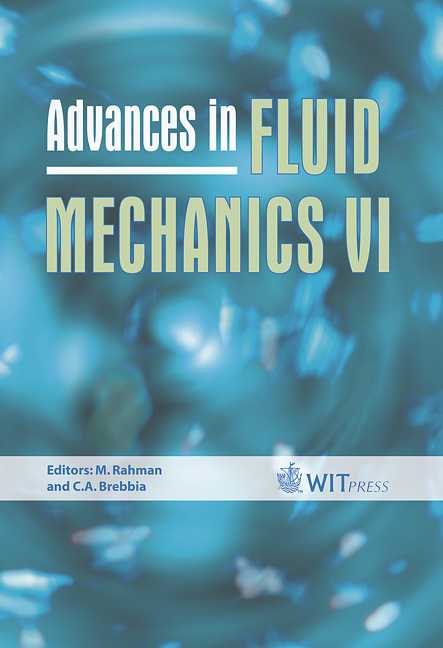Experimental And Computational Investigation Of Kinematic Mixing In A Periodically Driven Cavity
Price
Free (open access)
Transaction
Volume
52
Pages
11
Published
2006
Size
465 kb
Paper DOI
10.2495/AFM060111
Copyright
WIT Press
Author(s)
S. Santhanagopalan, A. P. Deshpande & S. Pushpavanam
Abstract
Mixing of fluids is important in many industrial processes. In this paper we discuss the process of kinematic mixing in Newtonian fluid and quantify the intensity of mixing. A cavity with a periodically driven lid was chosen for the experimental and numerical analysis. It is shown that the system behavior depends on two dimensionless parameters, the geometric parameter (Af) and the Stokes number (St). The mixing is quantified by the Planar Laser Induced Fluorescence (PLIF) technique using Rhodamine-B as the dye. Here the emitted fluorescent light intensity was related to the concentration of the dye present in the system. The extent of mixing was determined by calculating the deviation of intensity fluctuations. In addition, numerical analysis using the Particle Separation approach based on the calculation of stretch rates were done and applied to study the effect of two dimensionless parameters on mixing. Keywords: mixing, periodically-driven cavity, Planar Laser Induced Fluorescence, stretching. 1 Introduction Mixing is an important feature in many chemical processes. In a chemical reactor a reaction between two or more reactants can occur only when they mix with each other. Chien et al. [1] studied qualitative laminar mixing in a twodimensional cavity under different configurations based on the motion of the walls. They used material line and blob deformation for their analysis. They found that efficiency of mixing depends strongly on the frequency of oscillation of the walls and reported an optimum value of frequency, which produces best
Keywords
mixing, periodically-driven cavity, Planar Laser Induced Fluorescence, stretching.





